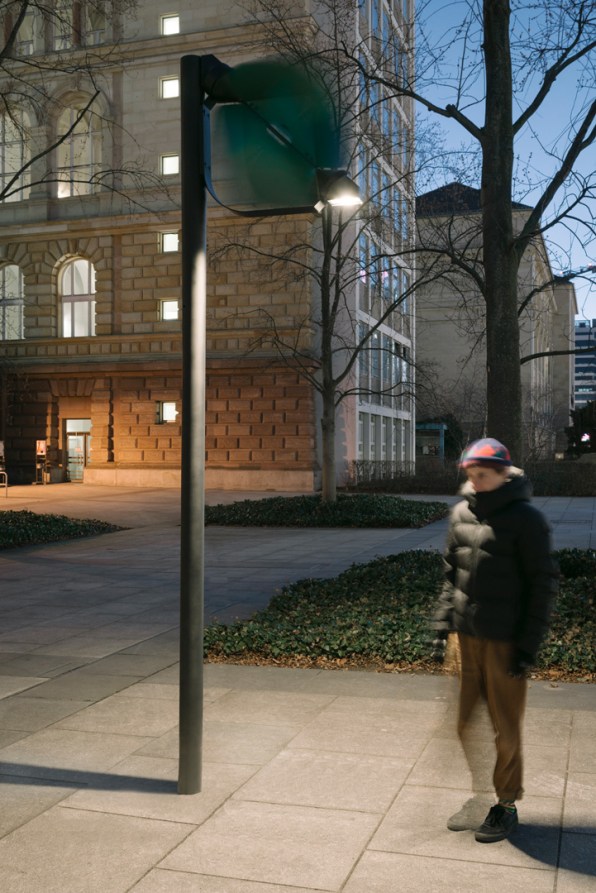We’re on the precipice of a full-blown energy crisis. The global population is growing, the climate is warming, and, no surprise, the demand for energy is steadily increasing. We need to use less energy in any way that we can.
Tobias Trübenbacher, a Berlin-based designer and student at the University of the Arts Berlin, has one such solution. Trübenbacher has created a street light called Papilio that combats energy pollution on two fronts: it’s wind-powered, which reduces its dependence on electricity, and the light itself has a motion sensor that’s only activated when someone passes underneath it.
There’s never been a more urgent time to find sustainable sources of energy. Some 60% of the electricity we use is still produced from fossil fuels. And if that weren’t enough, electric lights are causing unprecedented light pollution. Roughly 83% of the world’s population lives under artificial lights that brighten the sky 10% more than its normal level, which can disrupt animals’ migratory patterns and negatively impact biodiversity. While the Green New Deal has been reintroduced in Congress, it’s a long way from becoming reality. In the meantime, designers such as Trübenbacher are thinking of small, concrete ways to introduce clean energy and decrease pollution in your community.


The streetlight’s design is also a visual signal of clean energy in action. Trübenbacher describes the lamp’s climate-neutral energy generation as “an aesthetic play” that enhances public space, beautifying streets and taking on the climate crisis in one fell swoop. “Design not only determines how street lights are working. It can also shape our attitude towards them and consequently affect how we use them,” he says. Because energy creation is often an invisible process, projects such as these help “the production of electricity become comprehensible.”
The lamp’s ability to convert wind power into electricity can also be a huge benefit to naturally windy areas. And since it doesn’t require any electrical infrastructure, Trübenbacher sees an opportunity to install the street lights in remote settings or places where infrastructure innovations can be cost-prohibitive.
Trübenbacher has tested two working prototypes of Papilio around Berlin so far. It’s early in the process—he only presented the project a few days ago at his university—but he plans to do longer-term testing and then “get support from people who believe in the idea as much as I do.”


 Fastcompany.com adheres to NewsGuard’s nine standards of credibility and transparency.
Fastcompany.com adheres to NewsGuard’s nine standards of credibility and transparency.